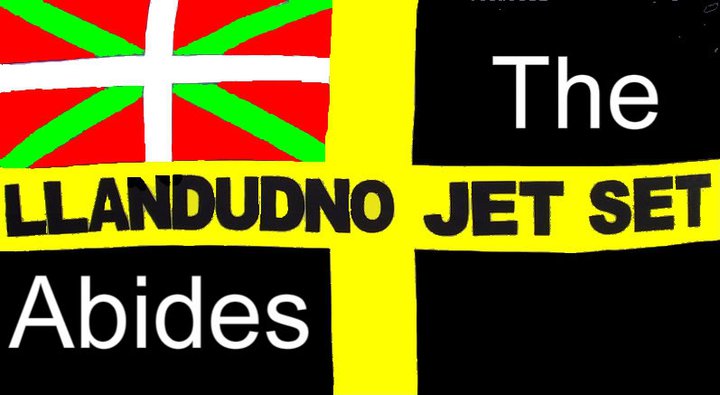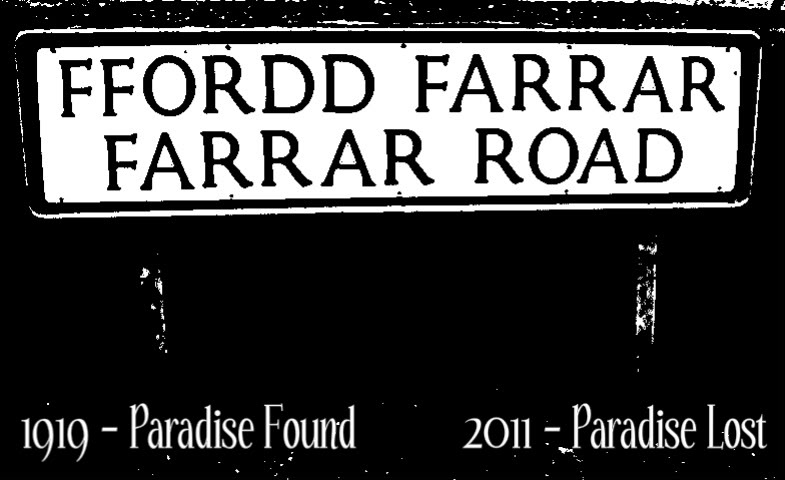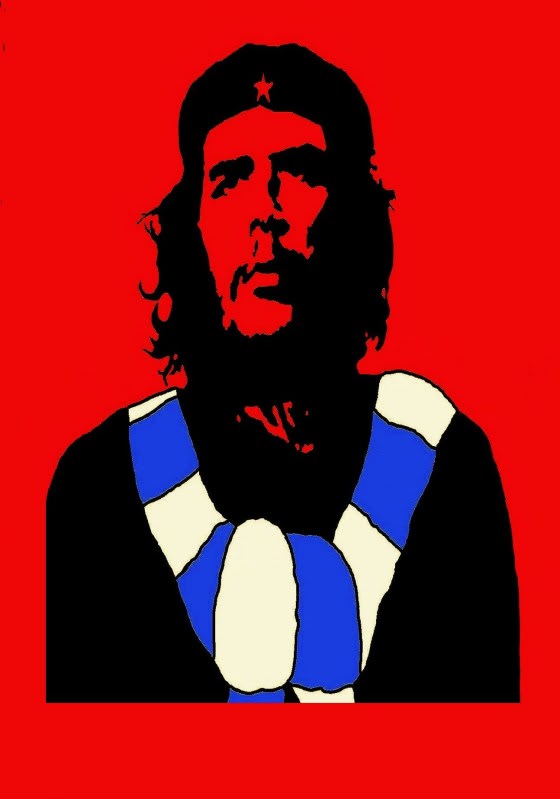You probably already knew that Bangor City’s first trip to “The Continent” happened 50 years ago but I’ll bet you didn’t know that a fortnight ago it was the actual 50th anniversary of the play-off between Bangor and Napoli (10th October). A play-off was necessary because UEFA deliberately delayed the introduction of the “away goals count double” rule for 3 years.
Bangor City were the second Welsh club to go to “The Continent” so we might as well say that 2012 is the 50th anniversary of all Welsh clubs going “over there”. Since the heady expeditionary days many famous nights have happened but then famous nights are bound to happen when the likes of Real Madrid, Hamburg, Roma, Porto and Anderlecht come visiting;
Even Newport enjoyed moments in the sun.
The most charming aspects of this glorious history are the adventures of the part time clubs. The year after Bangor played Napoli “tiny”, and now sadly defunct, Borough United played Sliema Wanderers and Slovan Bratislava in the space of a few months. In 1985 Bangor beat Fredikstad before losing narrowly to Atletico Madrid . In 1987 Merthyr narrowly lost their tie to Atalanta after winning the first leg . (Highlights of the 2nd Leg).
I want to do two things with this post; i) provide a short overview of the history of Welsh clubs in European competitions and ii) lament the loss of famous European nights because at present it seems inconceivable famous nights will ever take place again.
So without further ado let’s start the short historical overview. Here’s a list of the clubs that have competed in Europe (as well as the amount of times they’ve qualified);
14 – Cardiff City 13- Llansantfraid / XXX XXX XXXXXX 12 – Bangor City 9 – Barry Town 8 – Wrexham 7 – Swansea City, Llanelli 6 – Cwmbran Town 5 – Rhyl 4 – Carmarthen Town 3 – Inter Cardiff 2 – Newtown, Ebbw Vale, Aberystwyth 1 – Borough United, Newport County, Merthyr Tydfil, Afan Lido, Ton Pentre, Conwy United, Caersws, Haverfordwest County, Port Talbot Town, Neath Athletic, Cefn Druids.Now let’s see which places have seen the most Welsh visitors;
10 visits to; Finland (MyPa 47 twice, FC Honka twice, FC Haka twice, HJK Helsinki, KuPS, Tampare United, TPS Turku) 9 visits to; Denmark (FC Midtjylland twice, Silkeborg twice, Aarhus, FC Copenhagen, Esjberg, Lyngby, Naestved) Portugal (Porto 3 times, Sporting Lisbon twice, Boavista, Braga, UD Leiria, Maritimo) Latvia (Dinaburg 3 times, Skonto Riga 3 times, Ventspils twice, RAF Riga) 8 visits to; Poland (Amica Wronki, GKS Katowice, Polonia Warsaw, Ruch Chorzow, Stal Rzesow, Widzew Lodz, Wisla Krakow, Zagelbie Lubin) 7 visits to; Norway (Mjondalen, Haugar, Frederikstad, Kongsvinger, Viking FK, Brann, Aalesund) 6 visits to; E. Germany (Magdeburg twice, Motor Jena, Dynamo Berlin, Carl Zeiss Jena, Lokomotiv Leipzig) Ireland (Bohemian twice, Shamrock, Derry City, Cork City, Longford Town), Sweden (Djurngarden, Helsingborgs, AIK, Halmstad, Oster, Gefle), Lithuania (Suduva twice, Zalgris, Vetra, Atlantas, Taurus) 5 visits to; Malta (Sliema Wanderers twice, Zurrieq, Valetta, Floriana) 4 visits to; Spain (Real Zaragoza twice , Real Madrid, Atletico Madrid) Belgium (Standard Liege, Anderlecht twice, Charleroi), France (Nantes, PSG, Monaco, Bastia), Austria (Austria Vienna, Admira Wacker, SV Ried, GAK), Scotland (Aberdeen, Celtic twice, Motherwell) 3 visits to; Italy (Napoli, Roma, Atalanta), Bulgaria (Slavia Sofia, Marek, CSKA Sofia), Hungary (Ferencvaros, Bekescsabai, BVSC Budapest), England (Man Utd, Liverpool, Man City), Romania (Ploesti, National Bucharest, Gloria Bistrita), Iceland (Akranes, FH, Fram) 2 visits to; Holland (NAC Breda, Heerenveen), USSR (Moscow Torpedo, Dynamo Tbilisi), Switzerland (Zurich, Sevette), Yugoslavia (Hajduk Spilt, Rijeka), N.Ireland (Crusaders, Cliftonville), Ukraine (Dynamo Kiev twice), Serbia (Partizan Belgrade, Sartid) , Moldova (Nistro Otaci, Zimbru Chisiniau) 1 visit to; Czechoslovakia (Slovan Bratislava), W.Germany (SV Hamburg), Turkey (Goztepe), Cyprus (Larnaca) Greece (Panathanikos), Estonia (Levadia Talinn), Azerbaijan (Shamkir), Macedonia (Vardar Skopje), Croatia (Hratvatski Dragovoljac), Slovenia (Gorica), Slovakia (Slovan Bratislava), Israel (Maccabi Haifa), Georgia (Dinamo Tbilisi)The facts tell us that Finland is the most popular destination, this news won’t come as a surprise to the followers of Welsh football.
If we introduce a watershed year into our thinking, let’s say 1993, we can see an interesting breakdown. “Why 1993?” I hear people ask. Well, 1993 is a really significant year. It contained the formal split of Czechoslovakia, the creation of a single European market, the inauguration of the fourth Republic of Ghana, the development of Belgium into a federal monarchy, the end of Spender and the beginning of Shooting Stars.
Before 1993 Welsh clubs visited these countries;
E. Germany, Portugal, Spain, Italy, Malta, Denmark, Norway, France, Belgium, Ireland, USSR, Switzerland, Yugoslavia, Austria, Czechoslovakia, Bulgaria, Holland, W.Germany, Turkey, Cyprus, Hungary, Sweden, Poland, N.Ireland, Greece, England
After 1993 Welsh clubs visited these countries;
Finland, Latvia, Poland, Lithuania, Denmark, Sweden, Ireland, Norway, Portugal, Scotland, Belgium, Bulgaria, England, Ukraine, Serbia, Moldova, Iceland, Estonia, Croatia, N.Ireland, Georgia.
As you can see 1993 isn’t just an arbitrarily applied watershed that suited the writer of a worthless blog post; it’s a political watershed. It would not have been possible to visit the countries highlighted in blue before 1993. I must confess that geopolitics is just an aside, I chose 1993 because it was the first year in which the League of Wales provided clubs for European competitions.
This table shows the effect of the watershed year;
(Each single red oblong in the far left column is a club qualifying for Europe. When a red line extends it means that club has progressed into the next round. The blue line represents 1993.)
The table highlights a couple of things. Firstly, it highlights the dramatic increase in the number of Welsh clubs playing in Europe. This increase is simply explained. The League of Wales provided a system for gaining entry into the all of UEFA’s competitions. Before the League of Wales only one Welsh club, the winner of the Welsh Cup (or runner up if the winner of the Welsh Cup was an English club), could play in Europe each season. Secondly, the table highlights the end of the relative success enjoyed by Welsh clubs. Progression was regular before 1993 but not so regular afterwards.
Another table shows one of the reasons why success became less regular;
As you can see Welsh clubs generally began in the first round until 1993, after 1993 the starting point became gradually earlier. Welsh clubs now need to progress through several rounds in order to reach the starting point they once took for granted.
Now for some bare statistics. The total European record is;
Pl. 288 – Won 55 – Drew 54 – Lost 179 – Goals For 278 – Goal Ag. 618
The breakdown is;
Cup Winners’ Cup P 122 – W 34 – D 33 – L 55 – GF 157 – GA 181 Champions League P 38 – W 8 – D 3 – L 27 – GF 28 – GA 106 UEFA Cup / Eur. Lge P 94 – W 12 – D 12 – L 70 – GF 62 – GA 236 Intertoto Cup P 34 – W 8 – D 3 – L 27 – GF 31 – GA 95
Statistics reinforce the trend I’ve mentioned;
Before 1993 P 110 – W 34 – D 31 – L 45 – GF 151 – GA 144 After 1993 P 176 – W 21 – D 23 – L 134 – GF 127 – GA 474
The trend is reinforced even further if we look at the average match score;
Overall – Welsh club 0.97 Opposition 2.2. Before 1993 – Welsh Club 1.4 Opposition 1.3 After 1993 – Welsh Club 0.7 Opposition 2.7
Since 1993 Welsh clubs have played more, scored less and conceded more. The belief in an even chance has given way to the presumption of a heavy defeat. There are several reasons why the situation has changed.
Firstly, the standard of Welsh clubs participating is Europe has fallen. Before 1993 the clubs that generally played in European competition were the big three of Welsh football. They were professional, they trained, they were more able to match clubs for skill and fitness. After 1993 the vast majority of clubs have been semi-pro. There are two reasons for this; firstly, the League of Wales / Welsh Premier League is a semi-pro league and secondly, the big three haven’t been able to qualify for Europe because the FAW have prevented the Welsh clubs playing in the English system from entering the Welsh Cup.
If we bare this in mind and then look at the second table we can see the problems for the progression of Welsh clubs. Welsh clubs not only need to win far more games to reach the level of progress that was once taken for granted, they have to attempt this with semi-pro players. Semi-pros can beat pros in one off matches but they don’t often compete with pros over two-legged ties.
Secondly, there’s a reason we’ve already touched upon, the end of the cold war. The break-up of the Warsaw Pact allowed the break-up of its constituent members. In football this meant that the talented players from the USSR, Yugoslavia and Czechoslovakia were dispersed amongst the twenty odd successor states. Welsh clubs now potentially face skillful teams from twenty countries instead of three. The dispersal of talent is shown by the list of countries that Welsh clubs have visited since 1993. Not only do Welsh clubs have to use semi-pro players to make progress they also have to face a larger amount of skillful teams than they used to.
Lastly, and most importantly, there’s are the structure created by UEFA, or structural problems caused by UEFA if you’re cynical like me. In the early to mid 1990s UEFA chose to respond to the challenge of incorporating clubs from over 20 countries by creating a system with entrenched inequality. UEFA were so seduced by the rich and powerful clubs – the never ending glamour of two-legged ties between the undisputed behemoths of European football!!! – that they abdicated their responsibility for ensuring sporting integrity. UEFA not only allowed the rich and powerful clubs to act like imperial powers, they protected them as they did it. Mind you in UEFA’s defence you could say that they had to deal with the ideas of vultures like Berlusconi.
We saw the first indications of UEFA’s changing attitude as far back as 1994 when they prevented the national champions of unglamorous lands, Bangor City for example, from entering the newly created “champions league”. UEFA have gone much further since.
There are now blatant revenue-maximising draws that ensure glamorous matches are equally shared between TV markets. We see this every season because the same teams from the same countries reach the prominent stages of the champions league. UEFA ensure that glamourous clubs share exposure on these glorious evenings. UEFA’s decsion to award millions in prize money has also caused problems for sporting integrity by introducing this cycle into European football;
Club A does well in their national league > Club A gets to the champions League > Club A gets prize money > Club A buys better players > Club A does well in their national league again > Club A gets to the champions league….and so on…
In other words, behemoths have become insulated from the effects of competition.
The top down engineering has not only created obvious ethical problems in terms of sporting integrity, it has also created practical problems for most of Europe’s clubs; how do they gain access to the gated community? Obviously access is not gained easily. Seeded draws weight the competion in the favour of the bigger clubs. Seeded draws lead to a cyclical problem for Welsh clubs; a low ranking leads to constant beatings and constant beatings leads to a low ranking. The only result can be perpetual failure.
We can see the result of this top-down engineering in the second table; when Wales was represented by pro clubs Welsh clubs were 8 matches from a final, now that Wales is represented by semi-pro clubs Welsh clubs are more than twenty matches from the final. Although the incorporation of clubs from twenty league must have entailed some tinkering / extra rounds / seeding UEFA’s solution is not really about tackling the practicalities of the problem.
Simply put, in UEFA’s system the relationship between Welsh clubs and European competition is now akin to the relationship between Northern Premier League clubs and the FA Cup Final. Welsh clubs, along with the other leagues outside the ken of hipsters, have been ghettoized by UEFA’s engineering, as this comparison shows;
– In the first seven seasons of European football Welsh clubs travelled to; E. Germany, Italy, Malta, Czechoslovakia, Denmark, Belgium, Bulgaria, Ireland, Holland, USSR and W.Germany. – In the last seven seasons of European football Welsh clubs have travelled to Finland 9 times, Lithuania and Denmark 5 times and Ireland, Norway and Latvia 3 times.
So not only do Welsh clubs have to use semi-pro players to make progress, they have to face a larger amount of skillful teams than they used to play, then they have to play in more rounds than they used to. Basically Welsh clubs have no chance of competing in Europe. Aside from the entry of 12 billionaire owners there’s no easy way around this problem. An open draw could help. It could help Welsh clubs to achieve more progression. It could lead to lead to more enticing matches like the good old days but it’s not a pancea.
It’s sad to say but the proud history of Welsh clubs in Europe is fast becoming a poignant footnote.












[…] I mean who am I to judge? I’m not above writing data-related blog posts (Here, here and here ). Football’s a broad church and we all do our own thing when it comes to the beautiful […]